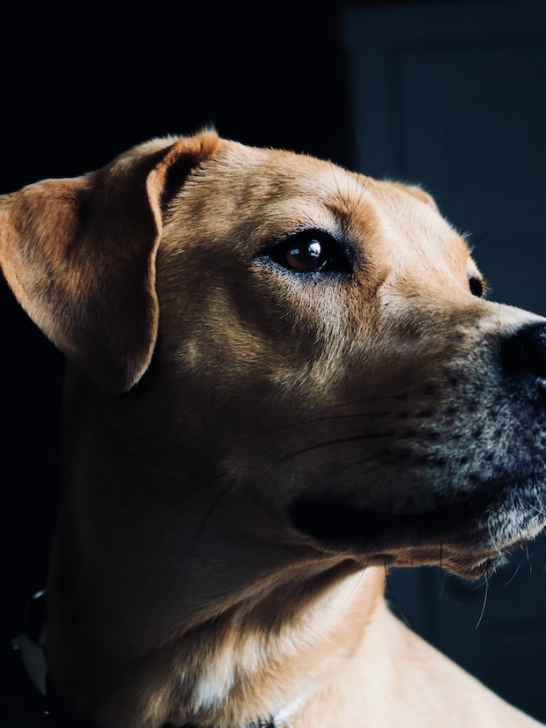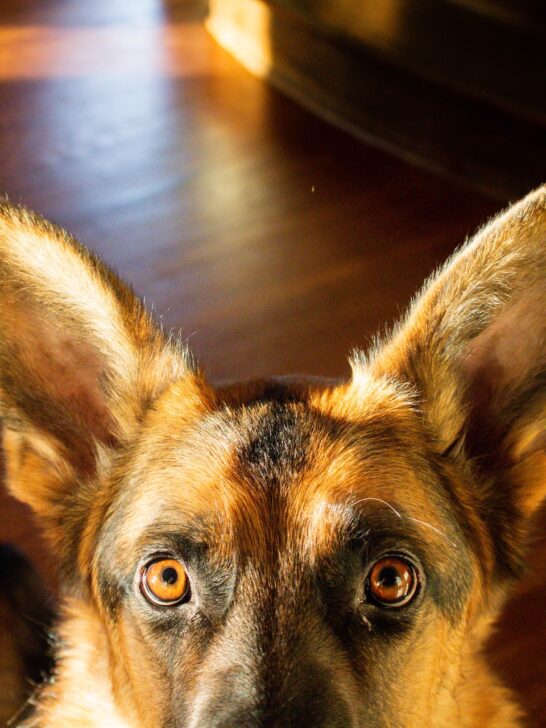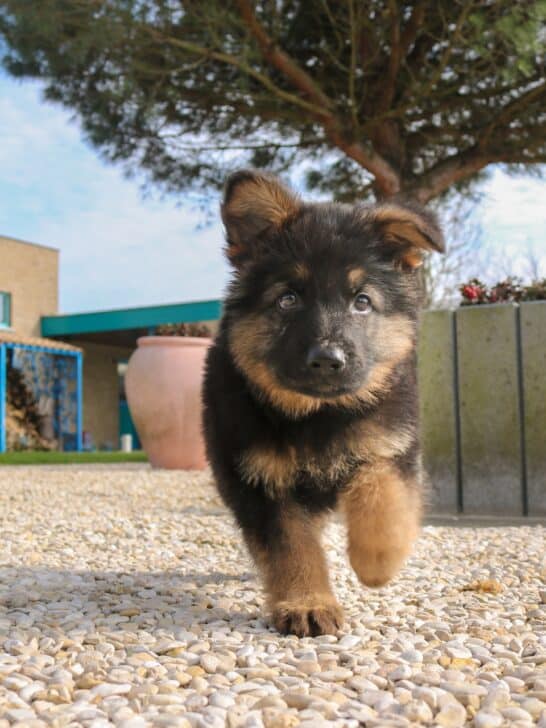When Is My Puppy Ready To Sleep Out Of The Crate?
Because domestic dogs retain some “den” instinct, a crate or secure overnight location like a puppy pen can be a handy tool for a dog’s first nights with you.
It allows them a small, safe space they can learn to trust as their home.
Crates can also help with naptime and toilet training, and give dogs a critical sense of safety.
But after all the effort to get them to recognize and trust their crate, how do you know when your young family member is ready to roam the house at night and not be shut in securely?
We’ve got the tips and advice that you need.
When Is Your Puppy Ready to Sleep Out of the Crate?
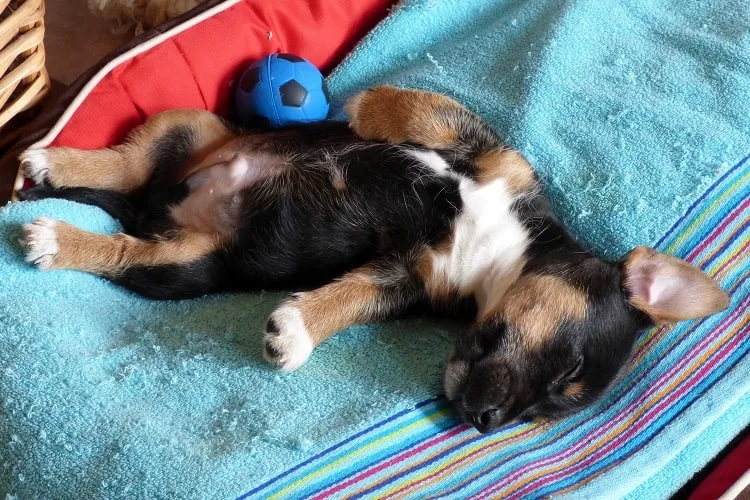
Most puppies are raised alongside their litter and mother in something similar to a crate—a whelping box.
So, a crate can feel natural to them once you bring them home.
However, it’s essential to realize that they’ve been used to the comfort of other animals around them—breathing, warmth, and heartbeats.
So it’s not a smart idea to completely isolate them away from every other living member of the new family during crate training.
Instead, try to place them in a room with you, where they can sense you, or other animals, so they don’t feel abandoned and alone.
At about three months old, you can move them to a quieter area of the home, once they trust their safe space.
Once you’ve got the hang of crate training, when is it time for puppies to have more independence?
This depends on some factors which we outline in detail below.
Of course, puppies don’t need to leave the crate at all. You can leave the door open so they can choose if they want to be in or out of it.
By about 7–8 months, your dog should be independent, and feel safe enough to explore the rest of the home overnight.
But always consider their individual needs, temper, and chewing habits.
Should My Puppy Sleep in a Crate?
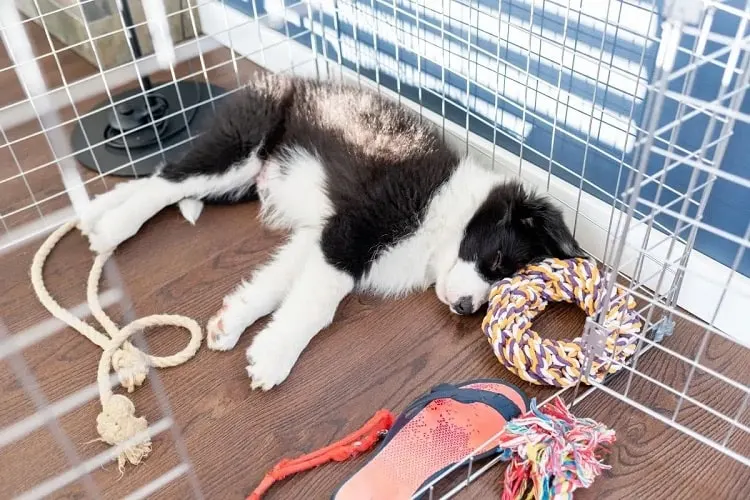
They don’t have to, but it can be incredibly useful.
By appealing to that “safe den” instinct, you create an area the dog can trust, making a big world more “puppy-sized” while they’re growing.
Plus, it lets you keep them safe when you’re not with them.
Crates offer young puppies a place where they aren’t overstimulated, and where they can retreat from over-eager family members when they’re tired.
Teaching children not to disturb or tease the pup in their crate, is also mandatory.
Additionally, crating well is a useful skill for a dog to have.
If you emigrate, travel with the dog, or they get hurt and need to be kept still and quiet, already knowing how to feel secure, instead of trapped, in a confined space is immensely useful.
Plus, trips to the vet will be a breeze as you’ll have a space where they’ll feel at home to place them in, or if you can’t supervise them, or if visitors come over who can’t be allowed near the dog.
Things to Consider Before Letting Your Puppy Sleep Out of the Crate
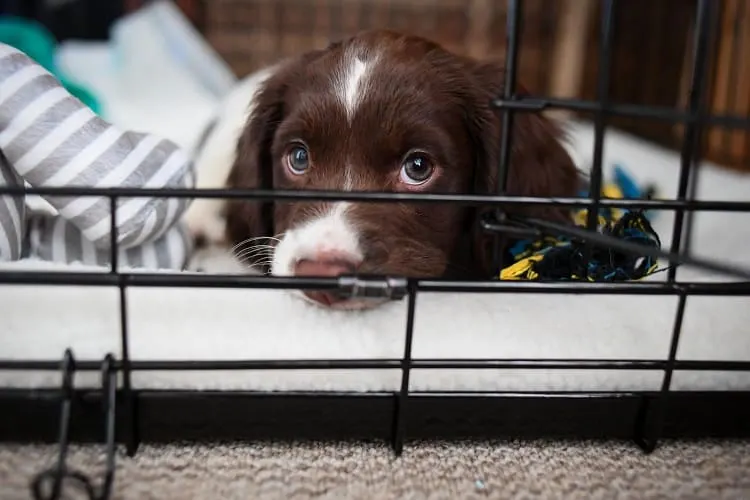
What goes into deciding if your puppy is ready for overnight independence? Here are some key factors to consider:
- Your potty training stage
- The safety of your home for a young, unsupervised animal
- The pup’s chewing nature (or their destruction capability)
- Other animals and their tempers
- Whether your puppy can sleep through the night
- Young children in the home, or people who could trip on the animal
- Factors like stairs, alarm zones, and other issues
You must ensure the puppy is still in a safe environment, especially if they aren’t being monitored.
It’s ok to introduce the house slowly and to only let them out in a room or two to start with.
And remember, many adult dogs sleep in their crate overnight; it’s not essential that they can roam throughout the night.
How to Make a Puppy’s First Nights Out of the Crate More Comfortable
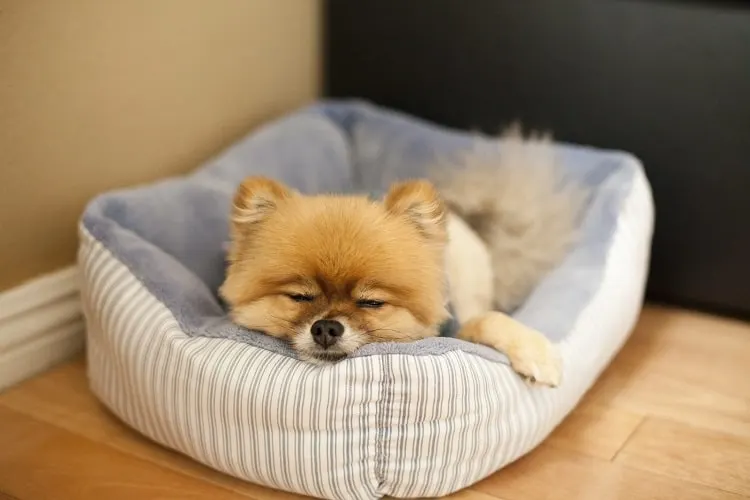
The most important thing you need to do is ensure your home is thoroughly puppy-proof.
It helps to get down “to their level” on the floor and check this out in detail, looking for hazards.
Like kids, they can be very inventive regarding danger and mischief!
Look carefully for things you may not automatically consider, from hanging and fall hazards to loose cables and electrical or chewing risks, right through to areas where you don’t want accidents to happen.
Remember, a curious and playful pup can also pull things over onto themselves.
Remove all chewable and breakable items, especially while teething. That’s unless you want some decorating done.
Make sure the last thing you do each night is head out for a potty break.
Then, make the room dark and cozy—a small animal will lose body heat faster than you and can be sensitive to new sounds.
You may want a “nanny cam” in the room for further monitoring.
A young dog may also wake up early and need a potty break, so be prepared to accommodate this.
We suggest leaving their bedding and crate (with an open door), so they have a familiar space to retreat to if they wish.
Conclusion
Crating isn’t necessary for dogs, but it’s beneficial, especially for your puppy.
If you want to transition them to more independence in the home, this guide will help you to do so without regressing their progress and confidence.

























